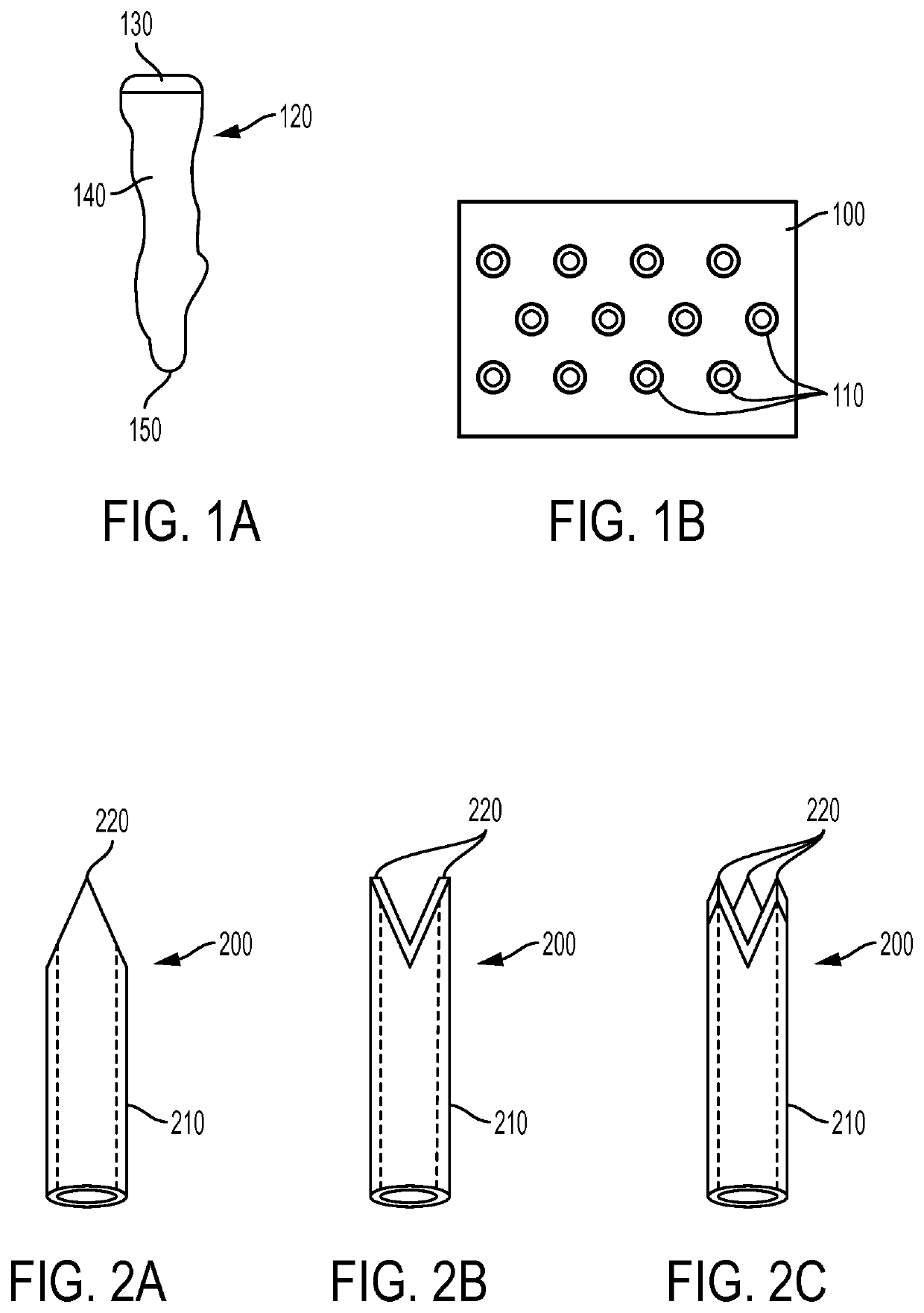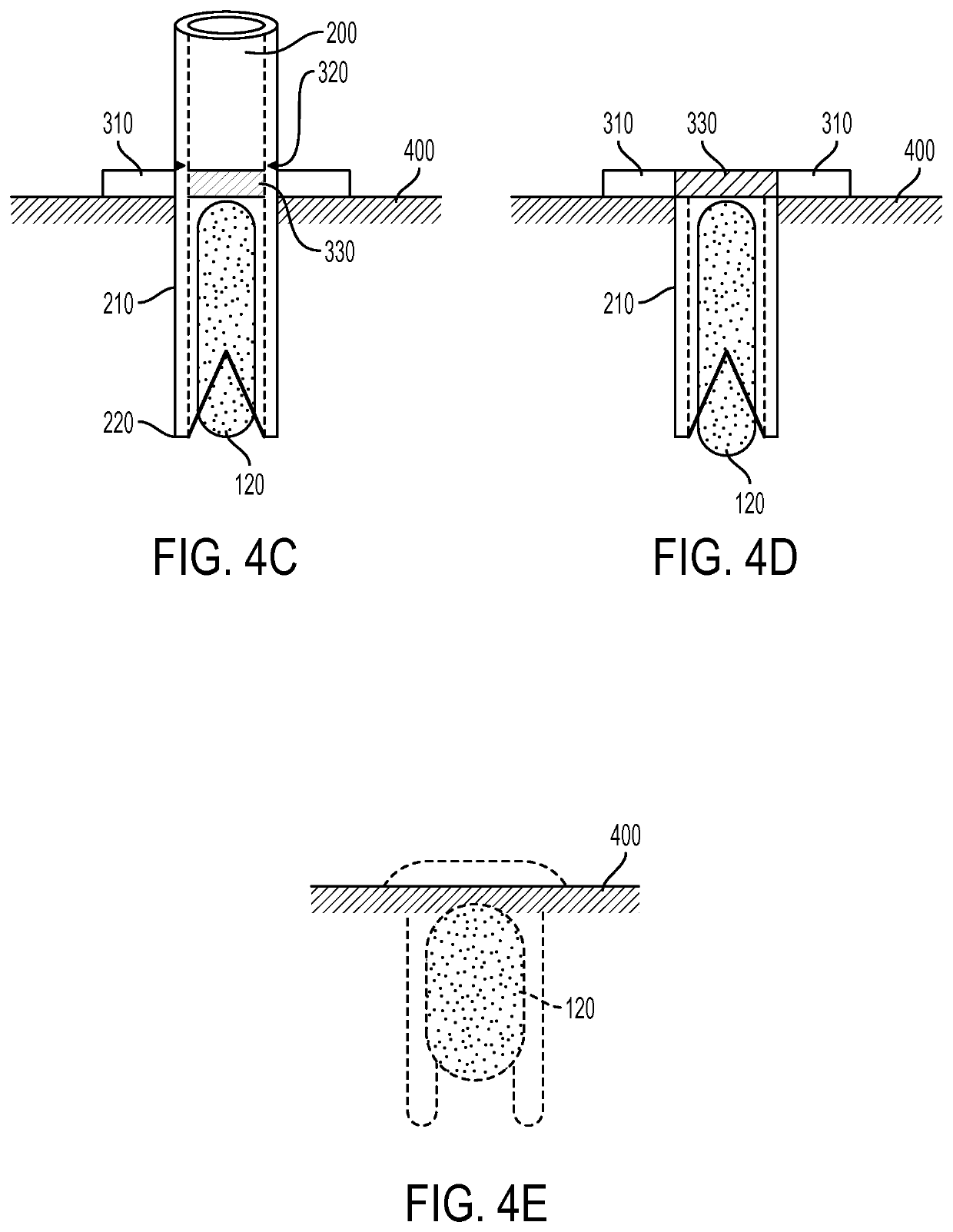Method and apparatus for tissue copying and grafting
a tissue copying and tissue technology, applied in the field of tissue copying and grafting, can solve the problems of large healing time at the donor site, limited tissue availability for autografting, and large area loss of sheet graft after placement, so as to facilitate dissolution of needles and/or transport, safe implanting of micrografts into the recipient site, and sufficient mechanical strength
- Summary
- Abstract
- Description
- Claims
- Application Information
AI Technical Summary
Benefits of technology
Problems solved by technology
Method used
Image
Examples
Embodiment Construction
[0023]Exemplary embodiments of the present disclosure provide method and apparatus for obtaining small portions of graft tissue (e.g., micrografts) that can be accompanied by rapid healing of the donor site, handling of such micrografts, and implantation of the micrografts into a recipient site or an ex vivo matrix for tissue copying. Such micrografts can comprise skin tissue that can include, e.g., epidermal and dermal tissue, and / or tissue obtained from other body organs and structures.
[0024]The micrografts can have at least one dimension that is relatively small, e.g., less than about 1 mm, or less than about 0.5 mm, or optionally about 0.3 mm or less, or about 0.2 mm. Such exemplary small dimensions of the micrografts can facilitate both healing of the donor site following harvesting and viability of the micrografts by allowing greater diffusional nourishment of the micrograft tissue. The small regions of damage in the donor site caused by a removal of the tissue portions can he...
PUM
 Login to View More
Login to View More Abstract
Description
Claims
Application Information
 Login to View More
Login to View More - R&D
- Intellectual Property
- Life Sciences
- Materials
- Tech Scout
- Unparalleled Data Quality
- Higher Quality Content
- 60% Fewer Hallucinations
Browse by: Latest US Patents, China's latest patents, Technical Efficacy Thesaurus, Application Domain, Technology Topic, Popular Technical Reports.
© 2025 PatSnap. All rights reserved.Legal|Privacy policy|Modern Slavery Act Transparency Statement|Sitemap|About US| Contact US: help@patsnap.com



